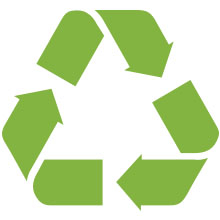Our Battery Cell
We use LFP technology which secures safe batteries that last longer and are more affordable. Our product does not contain nickel nor cobalt which reduces its risk of fire significantly and its environmental impact. We make the largest possible batteries in order to minimize the costs per cycle and increase energy density on a pack level.
Prismatic
Pouch
R&D center
In our R&D facilities, we create many new cells every day and test their properties. This is where all new ideas come to life and are being tested.
We have state-of-the art equipment with temperature and humidity controlled rooms where we can perform all types of cell assembly and analysis.
We would gladly welcome you in our facilities.
Product
Mixing, coating and drying
17 years of experience in these processes helps us scale much faster with greater accuracy and lower scrap rate.
Calendering
One of the most critical processes in the whole production. There are many methods to do calendering. Some of them require heating of the cylinders. Even application of the dry electrode is possible in this step.
Slitting and notching
In these steps, electrodes get their final form. Excess current collector is removed and electrodes are ready for the cell assembly.
Stacking
One of the most popular methods to assemble a cell is stacking. It has many advantages to winding since the cell fills the space better, has better performance and lower degradation. It comes at a cost by having a slower process in production.
Packaging and filling
This is the final step of the cell assembly. Active material goes into the casing which is then closed and electrolyte is added at the end. The cell is ready to start its life.
Packaging and filling Pouch
Packaging and filling Prismatic
Formation and degassing
In the formation step, the SEI (solid-electrolyte-interface) is being formed which plays a key role in cell's life. Cell is also degassed from excess gasses formed in this process.
Formation and degassing Pouch
Formation and degassing Prismatic
Aging and EOL testing
The cells gets its final properties in this step which typically takes a few days to complete and it can be on different temperatures. After the aging is complete, cells are sorted and classified and then go to packaging and are ready for the delivery to customers.
Aging and EOL testing Pouch
Aging and EOL testing Prismatic
Battery recycling
Today, we recycle our own aluminium scrap within our factory premises. We schred, collect and press our waste into briquettes.
These briquettes are then transported to our smelter where we melt the product and get 500kg aluminium blocks back which are shipped back to our suppliers.
Exhaust gases are filtered and the polymers collected on the filters are sold to the rubber industry.
We intend to implement a similar process for the scrap in our battery production in the future and hope to have one of the most vertically integrated recycling processes in the industry.
We show today what actions in the future will be like.

